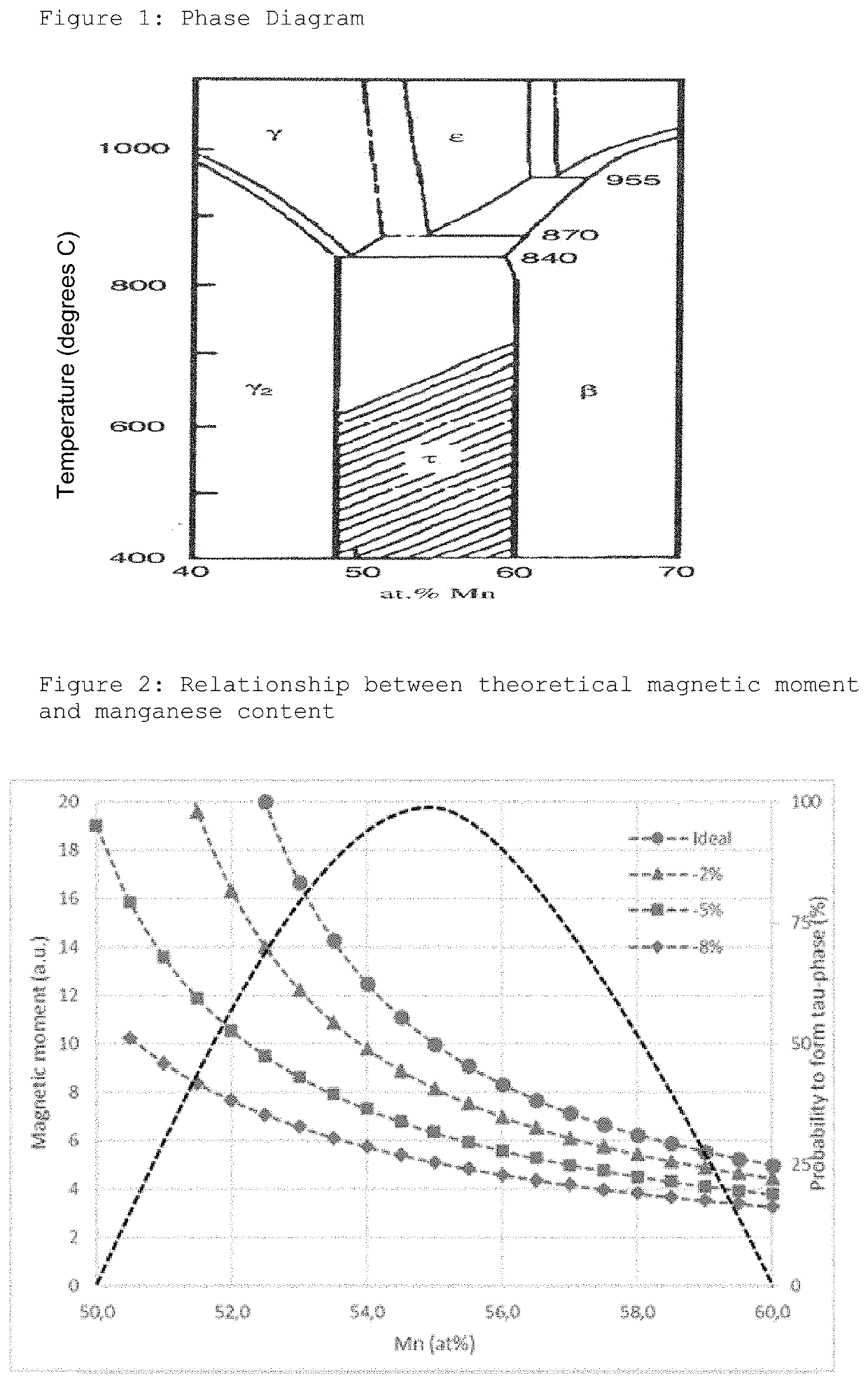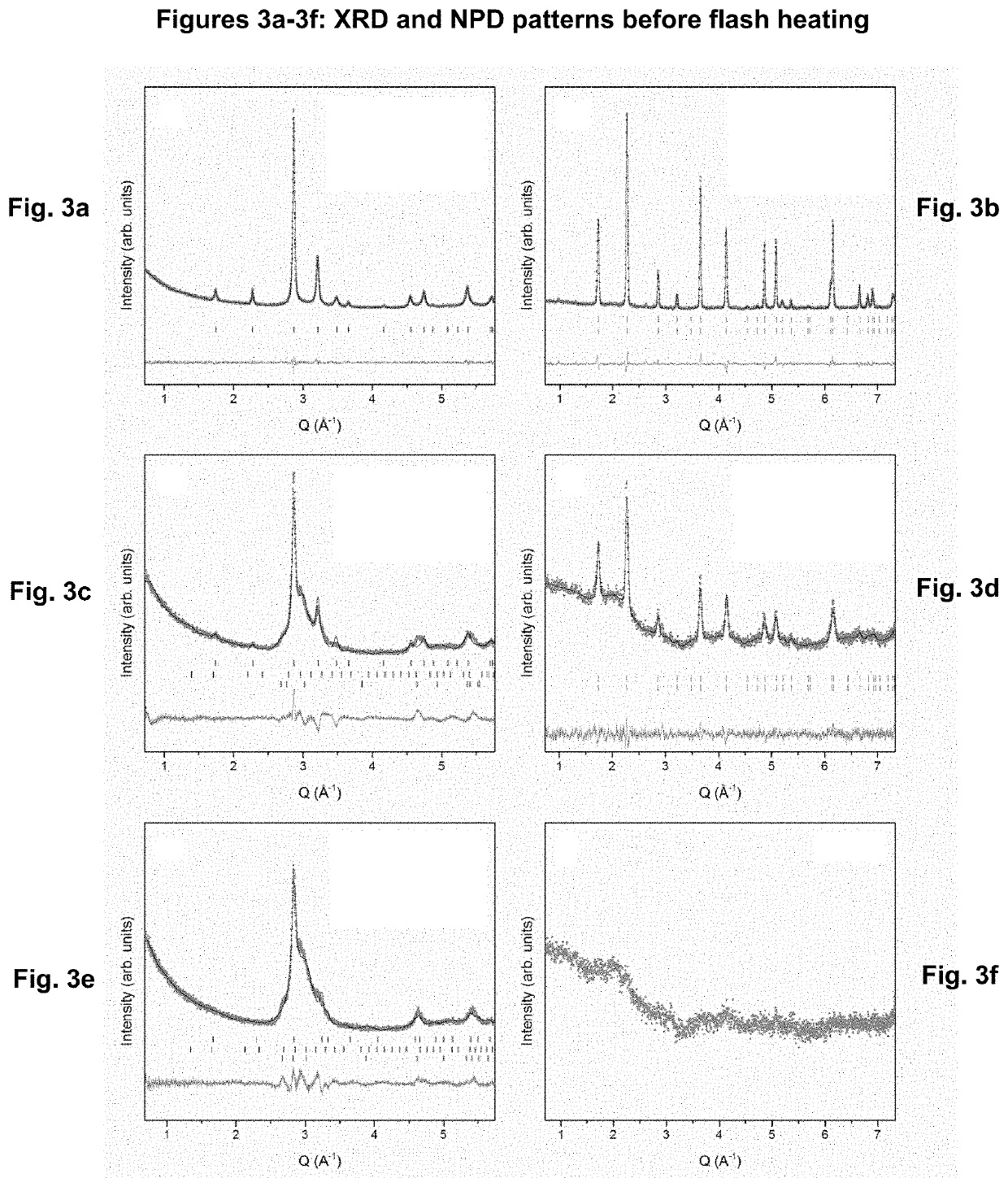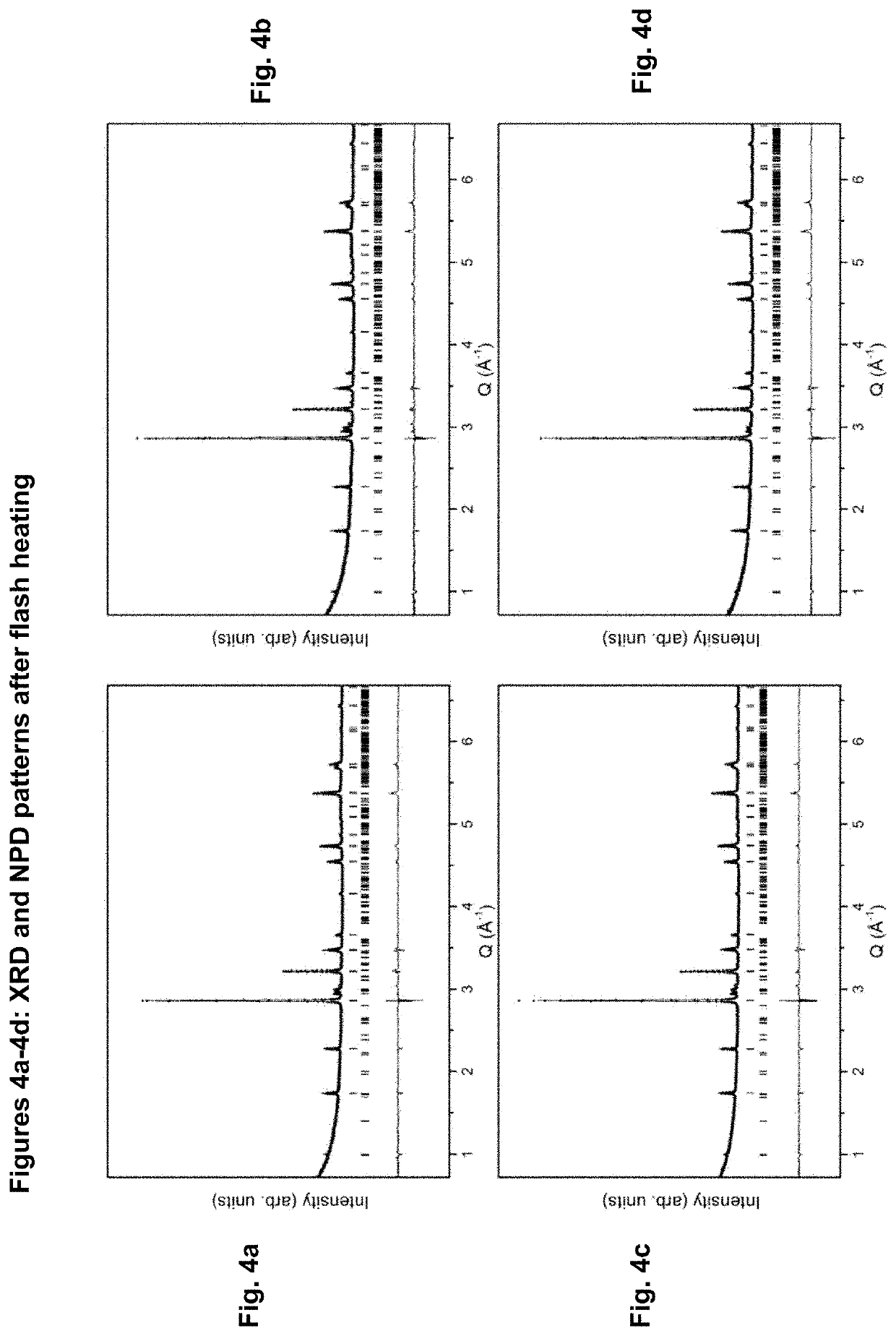MnAl ALLOY, PARTICLES THEREOF, AND METHOD FOR PRODUCTION
a technology of mnal alloys and particles, applied in metal-working apparatuses, transportation and packaging, etc., can solve the problems of difficult to obtain mnal alloys containing -phase in high purity, and high cost and environmental burden, so as to achieve high purity of -phase, good homogeneous microstructure, and robust processing. effect of further processing
- Summary
- Abstract
- Description
- Claims
- Application Information
AI Technical Summary
Benefits of technology
Problems solved by technology
Method used
Image
Examples
example 1
[0219]1.1. Sample Synthesis
[0220]An Mn0.55Al0.45C0.02 alloy ingot of 20 g was synthesized by a drop synthesis process starting from a melt at 1400° C., similar to a synthesis method described in H. Fang et al, Journal of Solid State Chemistry 237 (2016) 300-306. The raw materials were all of high purity, using Mn (Institute of Physics, Polish Academy of Sciences, purity 99.999%), C (Highways international, 99.999%) and Al (Granges SM, purity 99.999%).
[0221]First, Aluminum was heated and melted with carbon black in a alumina crucible at 1000° C. after the atmosphere was evacuated and high vacuum established (<0.001 bar). Small pieces of Mn metals were subsequently dropped into the melt of Al and C, then the eddy current power was increased to enable the Mn pieces to react with Al—C liquid immediately. The melt was kept at 1400° C. for 10 minutes to ensure that the Mn—Al—C liquid forms a homogeneous alloy solution.
[0222]The Mn—Al—C alloy was cooled down to room temperature by cooling ...
example 2
[0243]2.1 Synthesis
[0244]First, aluminum metal (Stena Aluminium AB, Sweden, >97 wt %) was melted together with graphite (Carbomax AB, Sweden, >98.5 wt %) at a melt temperature of about 1100° C. in an argon atmosphere. Thereafter, the manganese metal (Manganese metal company Ltd, SA, >99.7 wt %) was added and the melt temperature was adjusted to 1400° C. and held there for 5 minutes prior to gas atomization under an argon atmosphere at a pressure of about 19 bar. This caused a rapid cooling of the gas-atomized particles to form ε-MnAl alloy of high purity and low oxygen content (ca 0.03 wt % for gas-quenched). The raw materials were carefully adjusted to give the compositions of the samples presented in Table 3.
[0245]2.2 Milling
[0246]The gas-atomized particles were then milled using an MM 400 mixer mill (Retsch GmbH) capable for dry, wet or cryogenic grinding, optionally under argon atmosphere. A 50 mL hardened steel vial, 25 mm balls and an impact frequency of 30 Hz for 6 min with 1...
PUM
| Property | Measurement | Unit |
|---|---|---|
| temperature | aaaaa | aaaaa |
| temperature | aaaaa | aaaaa |
| median particle diameter D50 | aaaaa | aaaaa |
Abstract
Description
Claims
Application Information
 Login to View More
Login to View More - R&D
- Intellectual Property
- Life Sciences
- Materials
- Tech Scout
- Unparalleled Data Quality
- Higher Quality Content
- 60% Fewer Hallucinations
Browse by: Latest US Patents, China's latest patents, Technical Efficacy Thesaurus, Application Domain, Technology Topic, Popular Technical Reports.
© 2025 PatSnap. All rights reserved.Legal|Privacy policy|Modern Slavery Act Transparency Statement|Sitemap|About US| Contact US: help@patsnap.com



